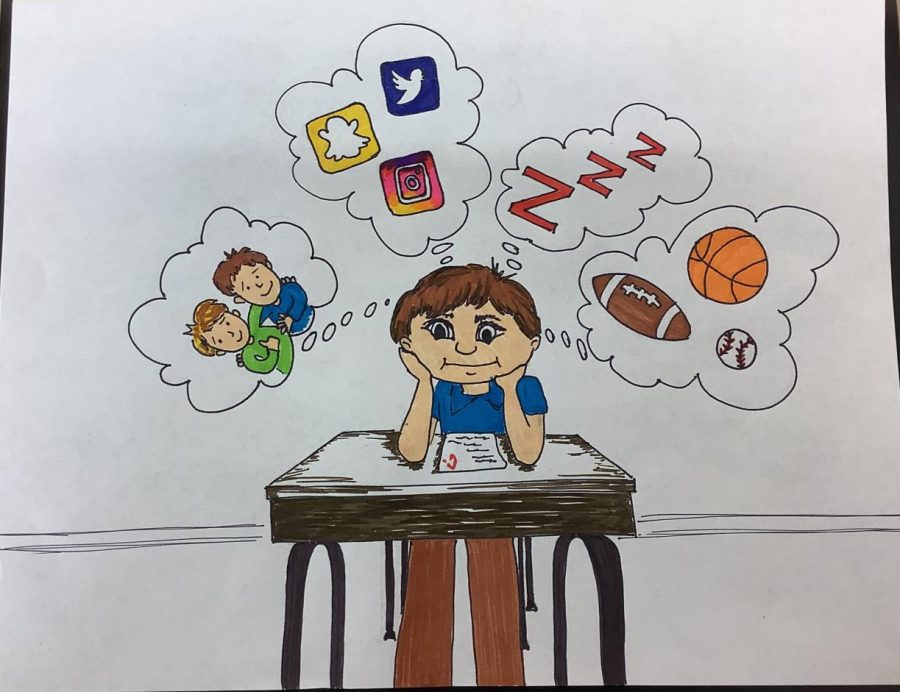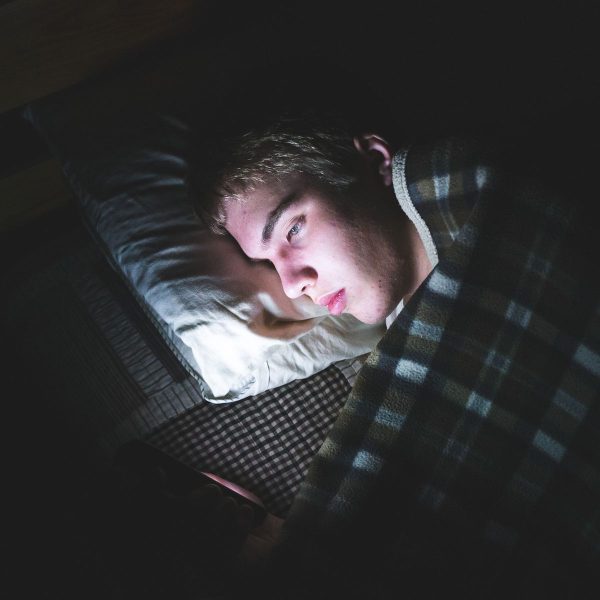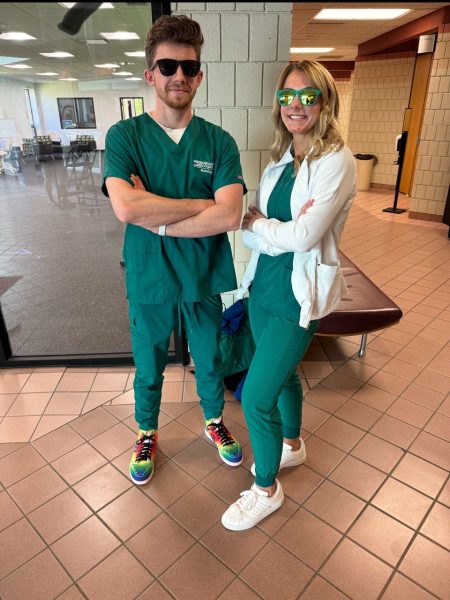Making the grades
Students focus more on their social life than they do on sleep and school work.
This drawing shows that the student has so much on his mind that has nothing to do with the school work he should be doing.
According to an article written “How Lack of Sleep Affects Student’s Grades” by Taylor Craig, 34% of high school students get bad grades because of a lack of sleep.
Many students at Norwin High School suffer from a lack of sleep often due to focusing on social life instead of academics. As a result, students receive bad grades which in turn lead to repeating classes or grades, not getting into a good college or passing state and national exams. Good sleep = good grades.
At Norwin High School the loss of sleep and the focus on social life is a problem. Forty-six Norwin students answered a poll that shows what they think contributes to their bad grades. Most students said that they get about 4-6 hours of sleep on an average day.
The response from the poll on the hours of sleep that some students get is a lot less than the recommended hours by the CDC.
The American Academy of Sleep Medicine has recommended that, for optimal health, children aged 6–12 years should regularly sleep 9–12 hours per 24 hours, and teens aged 13–18 years should sleep 8–10 hours per 24 hours.
Most students don’t know what to do to improve their grades or things that can improve their health.
“According to a study reported in the NPJ Science for Learning, sleep measures accounted for nearly 25% of the variance in academic performance. These findings provide quantitative, objective evidence that better quality, longer duration, and greater consistency of sleep are strongly associated with better academic performance,” said Mrs. Ferragonio. “Students at times will sacrifice school work and sleep for social events which likely affects academic performance at times.”
Sleep is one of the most important things to do when it comes to mental health and when it comes to performing well in school.
“Adequate sleep contributes to a student’s overall health and well-being,” said an author from the CDC. “Students should get the proper amount of sleep at night to help stay focused, improve concentration, and improve academic performance. “
Students from the poll were asked what takes up the most time from studying and getting good sleep.

Most of the students that took the poll said that the one thing that prohibits them the most from getting the good grades they want or need are sports or and or work.
Students were asked what takes up most of their time instead of taking time to study and to get good sleep so they can perform well in school.
“Overall the time you get to yourself and what you do gets cut a decent bit,” said a student from the poll. “Practicing everyday after school 3-5:45 and having game day Friday from 4-11pm then coming in Saturday 7:45-12 for JV games for football season. If you have homework on top of that you have even less time to do what you want which can make it very hard to make time to go hang out with your friends or do something you want to do.”
People that do sports and or extra activities after the school day have to deal with the loss of time to do their homework and study.
“I play sports because I created new bonds with different people and I want to further build on the bonds,” said another student from the poll. “I feel like I’ve been playing sports for such a long time and that if I would quit all the time, and money would be wasted.”
As some students stay connected to the things that they do, the CDC started a sample design that is involved with public and private schools.
An article by the CDC, Students complete an anonymous, voluntary, school-based paper-and-pencil questionnaire during a regular class period after the school obtains parental permission according to local procedures.The national high school YRBS is conducted by CDC. It uses a three-stage cluster sample design to obtain a nationally representative sample of students in public and private schools in grades 9–12. In 2015, the student sample size was 15,624. The school and student response rates were 69% and 86%, respectively, resulting in an overall response rate of 60%.







